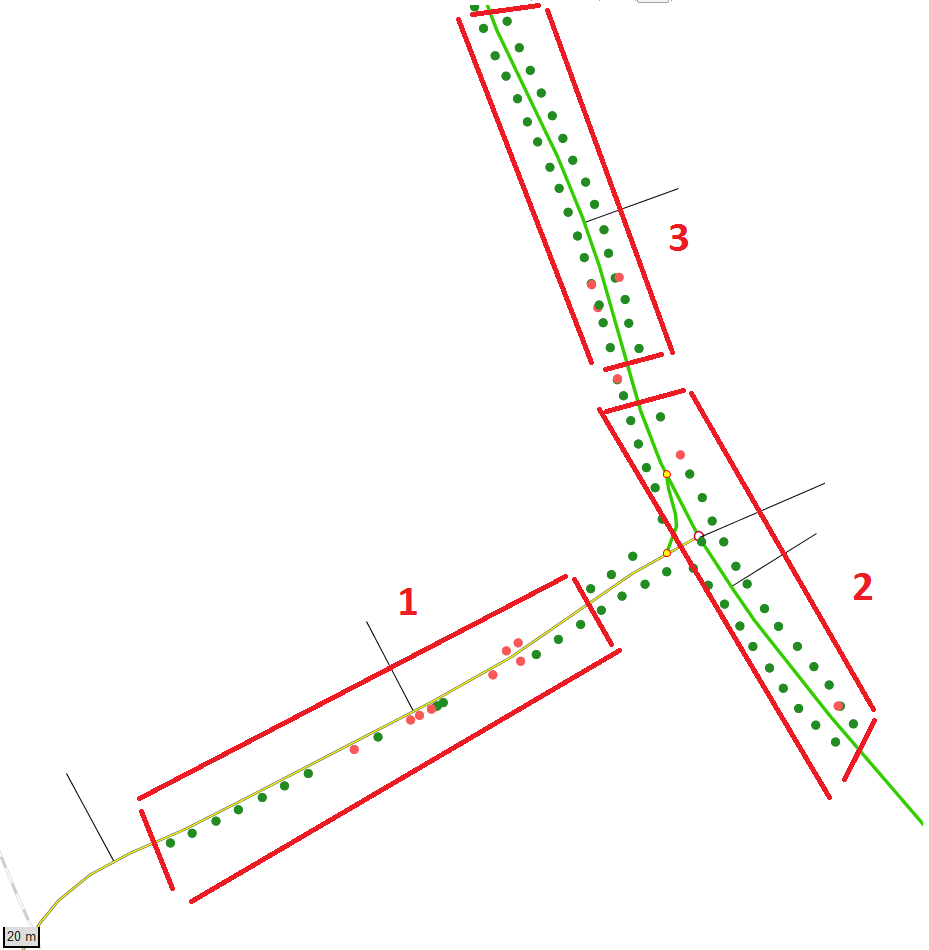Dear FME community,
I have a question regarding trees along a road (alley trees).
In the following example, the green points represent trees at the roadside, i.e. left or right side of the road. The red points are felled trees and can be ignored.
We want the length of the road where there are trees in one row at only one side (example 1) and trees in an alley (examples 2 and 3). An alley is where there are trees on both sides of the road, but only if it is more than 50 metres long and if there are more than 8 trees per row.

Perhaps there is an attribute way: we also have the measures on the road in addition to the coordinates, for example:
Tree 1 at road segment XYZ has the station 50 and is located left. That means it is 50 metres away from the beginning of the road. Tree 2 at the same road segment XYZ with station 52 is located right side. If there are more than 50 metres of these "couples", then it is an alley which we want to identify. The total length is also stored in the table.
Road SegmentStation
Side (left/right)
Road length
XYZ
50
L
1000
XYZ
52
R
1000
XYZ
61
L
1000
XYZ
60
R
1000
XYZ
70
L
1000
XYZ
72
R
1000
XYZ
85
L
1000
XYZ
86
R
1000
XYZ
100
L
1000
XYZ
103
R
1000
In the example of the above table, the length of the alley for this road segment would be 53 metres.
I don't now if this one can be solved without python knowledge, but perhaps somebody can give me a hint how to start. Any help is appreciated!
Many thanks and kind regards
Thomas





